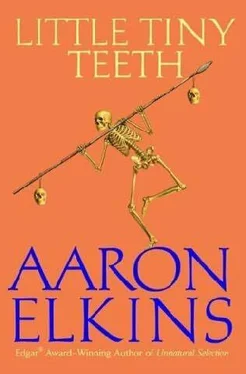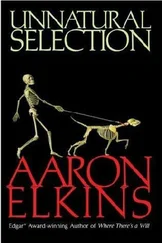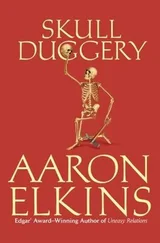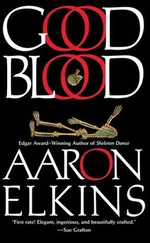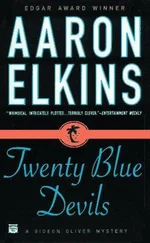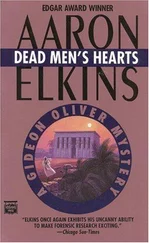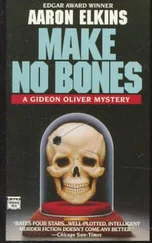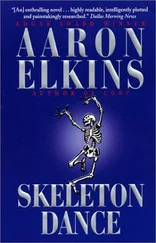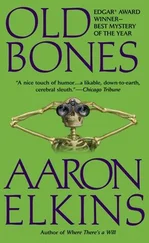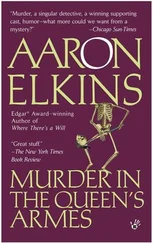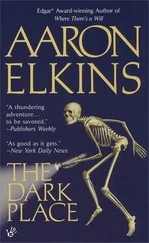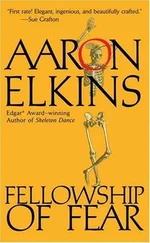Aaron Elkins - Little Tiny Teeth
Здесь есть возможность читать онлайн «Aaron Elkins - Little Tiny Teeth» весь текст электронной книги совершенно бесплатно (целиком полную версию без сокращений). В некоторых случаях можно слушать аудио, скачать через торрент в формате fb2 и присутствует краткое содержание. Жанр: Классический детектив, на английском языке. Описание произведения, (предисловие) а так же отзывы посетителей доступны на портале библиотеки ЛибКат.
- Название:Little Tiny Teeth
- Автор:
- Жанр:
- Год:неизвестен
- ISBN:нет данных
- Рейтинг книги:3 / 5. Голосов: 1
-
Избранное:Добавить в избранное
- Отзывы:
-
Ваша оценка:
- 60
- 1
- 2
- 3
- 4
- 5
Little Tiny Teeth: краткое содержание, описание и аннотация
Предлагаем к чтению аннотацию, описание, краткое содержание или предисловие (зависит от того, что написал сам автор книги «Little Tiny Teeth»). Если вы не нашли необходимую информацию о книге — напишите в комментариях, мы постараемся отыскать её.
Little Tiny Teeth — читать онлайн бесплатно полную книгу (весь текст) целиком
Ниже представлен текст книги, разбитый по страницам. Система сохранения места последней прочитанной страницы, позволяет с удобством читать онлайн бесплатно книгу «Little Tiny Teeth», без необходимости каждый раз заново искать на чём Вы остановились. Поставьте закладку, и сможете в любой момент перейти на страницу, на которой закончили чтение.
Интервал:
Закладка:
Gideon nodded. “Correct.”
“Not too surprising, considering what he was doing when he got himself killed,” said John.
“Hey, am I wrong?” Phil asked. He was staring at the shallow, eddying pool from which the skull had come. “Or are there some more bones down there? There, see? Caught in the branches, right on the bottom, a couple of yards-”
“You’re right!” Gideon said. “Vertebrae. Human too. And that’s the mandible under there!” He slapped the side of his head. “How could I not have looked! There might be more. Let’s fan out a little along the shore. Phil, could you ask these guys to do the same? I bet there is more. Something like the pelvis tends to get caught because it’s so big and irregular… I’d really like to see the pelvis…
But there wasn’t anything else. Only the mandible – the lower jaw – and a collection of vertebrae. Seven of them to be exact: all seven cervical vertebrae, the ones closest to the skull, the vertebrae of the neck. Somehow or other, the poor guy’s head and neck had gotten lodged there in that niche. The piranha had stripped them, and the bones had remained behind, almost as clean as the specimens you’d get from a supply house. Where the rest of what was left of him was at this point was anybody’s guess.
When they had fished them all from the water and laid them on a piece of plywood that one of the crew had brought from the construction area to keep them out of the mud, Gideon started with the mandible as the most likely one to provide more information, but there wasn’t much. The first thing was to fit it to the skull to make sure that they were really from the same person, and this was quickly verified. The few healthy teeth abutted perfectly and the two mandibular condyles fitted neatly into the glenoid fossae of the temporal bone, or as neatly as was allowed by the absence of the cushioning cartilage that would have been there in the living person. Beyond that, it pretty much confirmed his assessment of race and sex, and that was it. No interesting anomalies, no visible injuries, new or old. No additional clues to the living man.
On his knees in the muddy soil, he began to arrange the vertebrae in their top-to-bottom anatomical order, from C-1 to C-7, on the plywood sheet. The first two and the last one were easy, of course. C-1, the atlas, was like no other vertebra in the spinal column, essentially a simple ring – no spinous process, no vertebral body – a sort of collar on which the skull rested. C-2, the axis, had the smooth upward column of the odontoid process, essentially a pivot on which the atlas, carrying the skull, rotated, which was how one is able to freely turn one’s head. And C-7 was bigger than the others, so that was simple too. The middle four were a bit harder to differentiate, and Gideon settled down to comparing them two by two.
“Can I ask you a dumb question?” said Phil. “What are you doing all this for?”
Gideon continued working. “Well, I’m trying to learn a little more – ah, this is C-3, and this is C-4 – about who this guy was – that is, what he was like.”
“Yeah, but what difference does it make what he was like? I mean, who cares? There’s no way to actually identify him, is there?”
“Well, no, not by me-”
“He can’t help himself,” John explained. “He never met a skeleton he didn’t want to know better. You ought to know that by now.”
Gideon smiled. “You never know what you’re going to find,” he said as he figured out the final two and laid all seven in a row. “But there’s always something interesting.”
He leaned forward to study them, propping his hands on the plywood. Sweat dripped onto the board from the tip of his nose. Minutes passed. The crew members lost interest and wandered a few yards upstream to sit on a nest of fallen trunks, light more cigarillos, and chat among themselves. Phil lost interest and went to join them, but John sat down on a log and remained to watch. He had seen Gideon pull too many surprising and instructive rabbits out of the hat to go wandering off.
“Ah, there is something interesting,” Gideon said after a while, then quickly lapsed back into silence, picking up the vertebrae one by one, peering at them, poking at them, turning them round and round. John, well accustomed to this, waited patiently, twiddling – literally twiddling – his thumbs.
What had caught Gideon’s attention were the two lowest vertebrae, C-6 and C-7. Both had suffered some pretty serious injury to their vertebral bodies – the thick cylinders of bone that stacked one upon the other (separated only by the soft, pulpy, and so often troublesome intervertebral discs) to form and give strength to the vertebral column. Both bodies had a collapsed, caved-in look, especially at the front. He showed them to John, comparing them to the healthy, solid look of the others.
“Whoa,” John said, getting down on his knees in the mud beside Gideon to have a closer look and to handle them. “They look… it’s like someone just grabbed them with a pair of pliers and squeezed the hell out of them.”
“That’s not a bad metaphor, actually, but what did the squeezing were the vertebrae above and below them. These are compression fractures, John. They’re not broken in the usual sense of a fracture – that is, they’re not broken, as in ‘broken into pieces’ – they’re squashed. The pressure on them has compressed the cancellous bone inside.”
John was holding the C-7, running his fingers over the surface. “So what would do something like this?”
“Well, a lot of the time they’re associated with osteoporosis, where the bone is already thin and weak, and maybe the person falls and lands square on his rear end, and that jams the vertebrae up against each other. Sometimes the person doesn’t even know there’s been a fracture.”
“You mean it doesn’t hurt?”
“Oh yeah, it hurts all right. But it’s not like when you actually break a leg, or an arm, or a rib – snap – when that happens you know it the minute it happens. But something like this – he might just think he’s got a chronic headache or a pain in the neck from a strain, or a sprain, or something like that. People will go months before they finally see a doctor.”
John fingered the crushed part and grimaced. “Man, I think I’d know it.”
“But what’s interesting about these particular bones is that this guy wasn’t osteoporotic. Except for these two vertebrae, everything else that’s left is fine. That’s one thing that’s odd about it. The other thing is… mmm…”
“The other thing is…?” John prompted patiently.
“That you don’t see this kind of thing in the neck. It usually occurs down in the lower thoracic or lumbar vertebrae, right in that S-curve in our backs, because that’s where the pressure on your spine is concentrated – one of the unfortunate outcomes of our walking around on two legs instead of a more sensible, balanced four. When you see it in the cervical segment, it’s usually something like a motorcycle accident, or an automobile crash where the person’s head is driven up against the frame of the windshield, say. But in something like that, you’d expect some associated trauma, whereas in this case the other bones don’t show any. The skull’s fine – other than that hole, of course – the mandible’s okay, and none of the other five vertebrae are damaged. In fact, the only times I can remember coming across cases like this one were… I’ll be damned. Is it possible…? I bet…” He trailed off in mid-sentence and wandered abstractedly upstream to where Phil and the crew members were yakking away like lifelong buddies.
“Were what?” John yelled after him. “Is what possible? Damn it, I wish you wouldn’t-” With a sigh and a shake of his head, he followed after him.
Читать дальшеИнтервал:
Закладка:
Похожие книги на «Little Tiny Teeth»
Представляем Вашему вниманию похожие книги на «Little Tiny Teeth» списком для выбора. Мы отобрали схожую по названию и смыслу литературу в надежде предоставить читателям больше вариантов отыскать новые, интересные, ещё непрочитанные произведения.
Обсуждение, отзывы о книге «Little Tiny Teeth» и просто собственные мнения читателей. Оставьте ваши комментарии, напишите, что Вы думаете о произведении, его смысле или главных героях. Укажите что конкретно понравилось, а что нет, и почему Вы так считаете.
